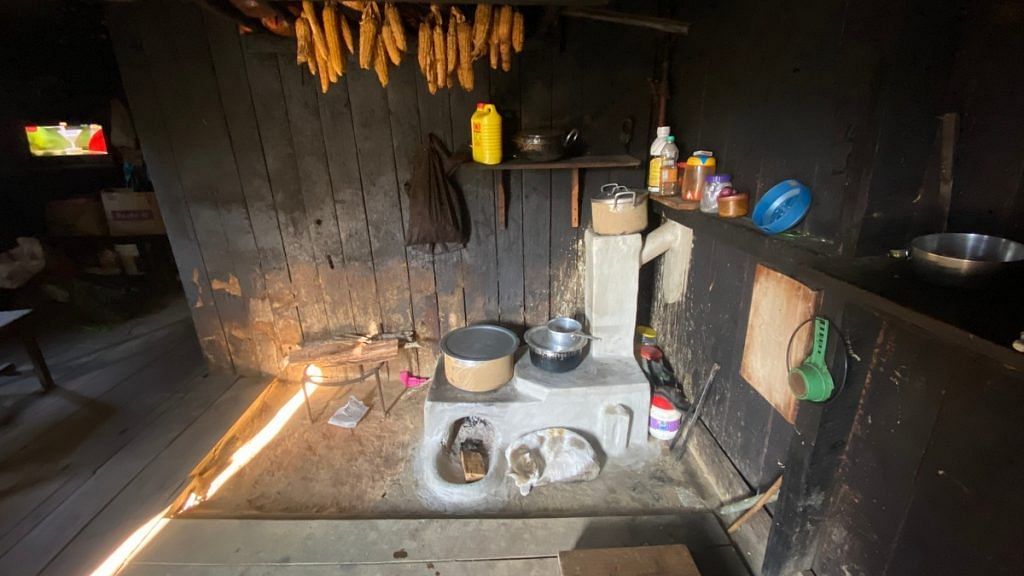New Delhi: Hundreds of villagers in Sikkim, nestled in the eastern Himalayas, often had to venture into forests that are also home to the Bengal tiger and clouded leopard to collect firewood for their ‘chulhas’ or traditional cooking stove.
But in the past five to six years, things have changed. An improved cookstove — originally developed in Nepal — is helping reduce the amount of firewood usage among residents in the Himalayan state.
This cookstove, made with locally-sourced materials, uses up to 50 per cent less firewood. The new design is also heat efficient, which helps in cooking food faster and has an in-built chimney that reduces exposure to smoke.
While some residents had been using this improved cookstove for a few years, the World Wildlife Fund for Nature (WWF), India, has popularised it in the state since 2016.
“There is a lot of cross border interaction, and people living close to the India-Nepal border were the first to start adopting the new chulhas. Then some of our partner NGOs decided to expand the project to other households,” Priyadarshinee Shrestha, team leader of the Kanchendzonga landscape project of the WWF India, told ThePrint.
The cookstove was created and promoted by Namsaling Community Development Center, an NGO in Nepal, Shrestha said. She also explained how the WWF first learnt about the problem of firewood collection in Sikkim.
A WWF team had been working since 2006 for the conservation of the red panda in the state. In order to develop a conservation programme that can be led by residents who closely interact with the animal’s habitat, the team tried understanding various community perceptions.
“During conservation projects, we also work with local communities to understand what issues they face. One of the main challenges that came up was that the villagers were dependent on the forest for firewood,” said Shrestha.
An internal survey by WWF India showed that the annual average consumption of fuelwood is more than 10,000 kg per household in the state.
The Kanchendzonga landscape is a 10,000 square kilometre area and home to a variety of wild animals, including the Bengal tiger, Asian elephant, clouded leopard and gaur in the lowland areas as well as the red panda — Sikkim’s state animal.
Also read: Cassava can be the gateway crop that helps farmers bring unproductive land back to life
Training on building ‘chulhas’
Not only did the WWF team help households install these chulhas in their houses, but they also started providing training on how to manufacture and build the cookstoves using locally available materials.
“Building these chulhas is slightly more difficult that the traditional ones,” Shalini Thapa, WWF project officer for Kanchendzonga landscape, told ThePrint.
The bricks used to make these chulhas are made using specially-designed frames and cast with local materials. The WWF’s training course, which spreads over a span of two weeks, prepares residents on ways to build these chulhas in their own houses.
“Even though it takes more time to build than the regular chulha, the locals are slowly adopting these because of the many advantages,” Thapa said.
Buddha Bir Tamang, a 36-year-old resident from Yalli village in East Sikkim, told ThePrint that the chulha has reduced his household’s firewood consumption by nearly half.
“Now, we do not have to go into the forest as often as before to collect wood,” Tamang said. His household has been using the improved cookstove for five years now. Tamang has also been employed by the WWF team to provide training to other villagers.
Shrestha said even though many villages were covered under the PM’s Ujjwala Yojana — which distributes LPG connections to women from Below Poverty Line (BPL) families — refilling cylinders was a challenge in Sikkim.
“Refilling facilities are often not within immediate access for these households — for some the nearest refilling station is 20 kilometres away,” she added.
As a result, villagers prefer to use their chulhas on a regular basis, saving the LPG cylinders for special occasions.
The team now plans to take these chulhas to local schools where mid-day meals are prepared, to further popularise the innovative cookstove.
Also read: The new vegan pet food that can save the planet — maggots
